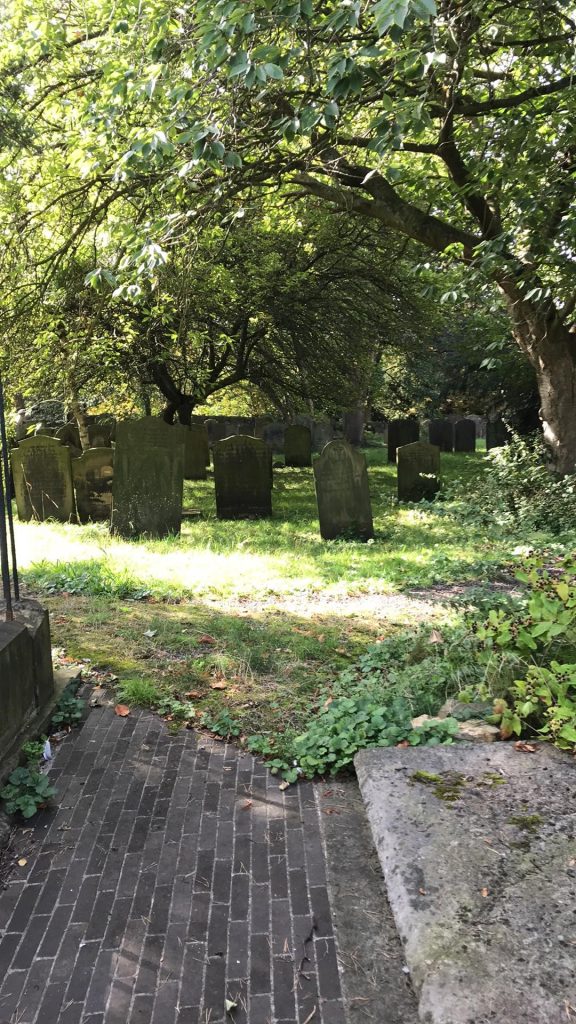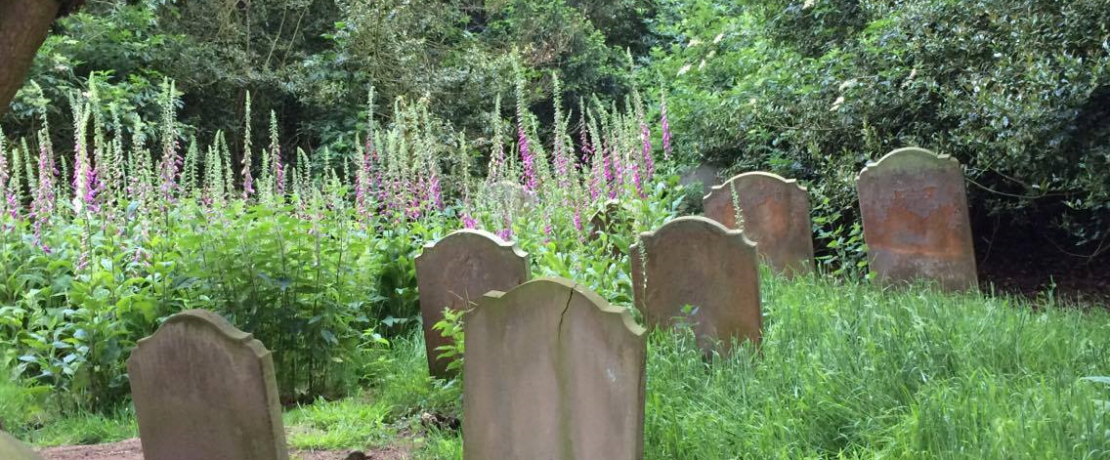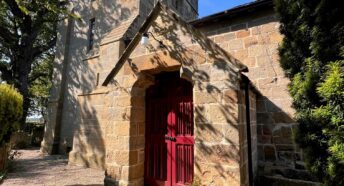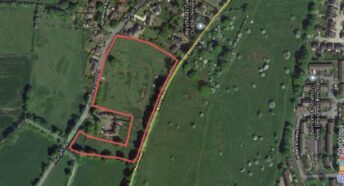Our beautiful Churchyards and Cemeteries
Caring for our beautiful Churchyards and Cemeteries is not just beneficial for our diverse wildlife and fragile ecosystems, it’s also great for people too. When greenspaces such as Churchyards and Cemeteries are accessible & inclusive, they can boost health and wellbeing.
The Church of England estimates that there are ‘16,000 churches here in the UK, and approximately 10,000 of them have churchyards’. Ranging in size from a small garden to 100 acres, these sacred, and to some extent, overlooked spaces are thriving with some of the most biodiverse ecosystems found in the UK.
According to a recent study published in The Journal of Global Ecology & Conservation, a total of 140 protected species have been found in cemeteries and churchyards across Europe, many of which are can be found in the UK. These include: Bats, The Bat Conservation trust reports that ‘over 60% of pre-16th century churches have bat roosts and at least 8 species roost in church buildings’; Veteran or ancients trees, The Ancient Yew Group have recorded 978 ancient or veteran Yew trees (500+ years old) in England, many of which are found in churchyards; Lichens, according to the British Lichen Society, ‘of the 2000 British species, over a third have been found in churchyards & more than 600 have been found growing on churchyard stone in lowland England’.
The wildlife-rich churchyard is, in part, due to its long-term survival and relatively undisturbed status, it’s not unusual to find a churchyard that pre-dates the building of the church itself. The churchyard enclosure has, in most cases, remained unaffected by the industrialised and chemically driven agricultural practices used in the farming sector since the post-war period. In such profoundly transformed landscapes, these comparatively undisturbed greenspaces hold a significant conservation value as they can act as sanctuaries for biodiversity.
Under Threat
Despite this, many churchyards are facing several significant challenges. With a shift towards an increasingly post-secular society, aging church congregations and declining attendances (the average congregation size for a rural church is 22, in some parishes it’s less than 10), comes financial hardship. Consequently, the maintenance of church buildings and the land which they occupy becomes a significant problem facing many rural communities. Churchyards struggle to generate any new income for maintenance, without this, the area becomes vulnerable to neglect or abandonment. Liability is often handed over to the local authority, which, according to the charity Caring for God’s Acre, is ‘frequently without an agreed management plan that is sympathetic to the site’.
The management of the area is often well-intentioned; however, council budgets often dictate the level of care a site is given, and where an in depth understanding of the area is missing, management can sometimes be detrimental to the area. In response to these challenges, many parishes now rely on the generosity of volunteers for their survival.

Caring for God’s acre
Over the last 20 years we have seen a number of local & national conservation groups & charities become established as a response to such challenges. For example, Friends of York Cemetery, Caring for God’s Acre and The Beautiful Burial Ground Project all share a collective vision; to protect, regenerate and share our treasured churchyards.
They aim to invite local communities into their churchyards, and give them an opportunity to connect with nature; the churchyard provides a valuable space where this connection can be made, which is a privilege not afforded to 1 in 5 people in the UK.
The programmes, which are largely supported by volunteers, aim to support communities by offering practical guidance in actively managing their churchyards to benefit the wildlife found within the area. The Beautiful Burial Ground project offers volunteers the opportunity to take part in a variety of community-based activities, such as conservation work, educational events, and surveying. The programme aims to ‘invite’, ‘inspire’ and ‘engage’ volunteers and local communities to ‘learn about, research and survey the natural, built and social heritage of their local burial grounds’.
While the focus of their activities is to deliver vital conservation work, there is a strong emphasis upon keeping active, learning, building relationships and cultivating community spirit. The programme encourages volunteers to connect to their local community and other volunteers through the sharing of knowledge, skills and experience.
Wellbeing
The programmes are undoubtedly beneficial to our churchyards and wildlife and they also empower groups to take a positive step towards regenerating our churchyards. Given the challenges which they are facing, and their ecological significance, it is evident that these hallowed spaces need to be cherished. However, it’s not just the wildlife who benefit from the caring of our churchyards, it’s beneficial for participants too. Engaging in ‘green’ community-focused activities can and has been shown to boost health and wellbeing on several levels.
There is a wealth of credible research into the effects environments can have on the human body, the study of health and wellbeing and its relationship to urban areas is becoming increasingly recognised by architects, urban designers and planners. Research has revealed the detrimental impact densely populated urban areas have on the human body.
Conversely, there is a significant evidence base showing the restorative effects green spaces can have on health and wellbeing. Research has shown that spending time in greenspaces such as public parks, hospital gardens and nature reserves can achieve positive health outcomes in individuals, such as a reduction in anxiety & stress, an increase in positive mood and improved attention and concentration. The benefits of connecting with the natural environment have also been widely accepted within the public health and science community; in an attempt to address the increasing strain on our national health services, GPs are now piloting a scheme where Green Prescriptions are being prescribed alongside a treatment plans to address certain neurological and cardiovascular illness such as depression and heart disease. There is little agreement on how this works, but it does!
The benefits are clear, but these only represent half of the person. Physical and mental health is a human good, but it’s not the only good we need to thrive. Health, as defined by the World Health Organisation is ‘a state of complete physical, mental and social wellbeing, and not merely the absence of disease or infirmity’ (WHO, 1948). To achieve a state of good health, our need for community and connection must be met. So, how can caring for our churchyards help us achieve a more holistic state of health and wellbeing?
Many of our churchyards are located in rural communities which are sparsely populated, and as the Centre for Rural Economy at Newcastle University have observed, these areas offer limited opportunities for wider social interaction; as a result of poor communications & transport infrastructure, post office and library closures, rural isolation is a problem facing many of our rural communities and is increasingly correlated with poorer health. Caring for our churchyards gives us an opportunity to challenge this, by encouraging volunteers to connect and interact with their local communities, it can reduce social isolation. This affords important benefits for individual health and wellbeing, building social relationships and a sense of community inclusiveness can protect us from poor health.
Our Churchyards are not only valuable spaces in terms of biodiversity, they also have the potential to bring communities together and enhance the health and wellbeing of individuals. There is a need to recognise, and champion the valuable work volunteers are doing to protect them. With this in mind, CPRE North Yorkshire has launched it’s inaugural competition ‘Best Churchyard 2021’. The judges are not seeking the most pristine or manicured churchyards. They are looking for well-managed churchyards which provide a peaceful haven for people and wildlife. The competition aims to recognise and reward North Yorkshire’s churchyards which are managed to provide both a peaceful haven for people and wildlife. Entries are encouraged from churchyards of all denominations.
For more information please contact us directly on our website or email us on info@cprenorthyorkshire.co.uk









